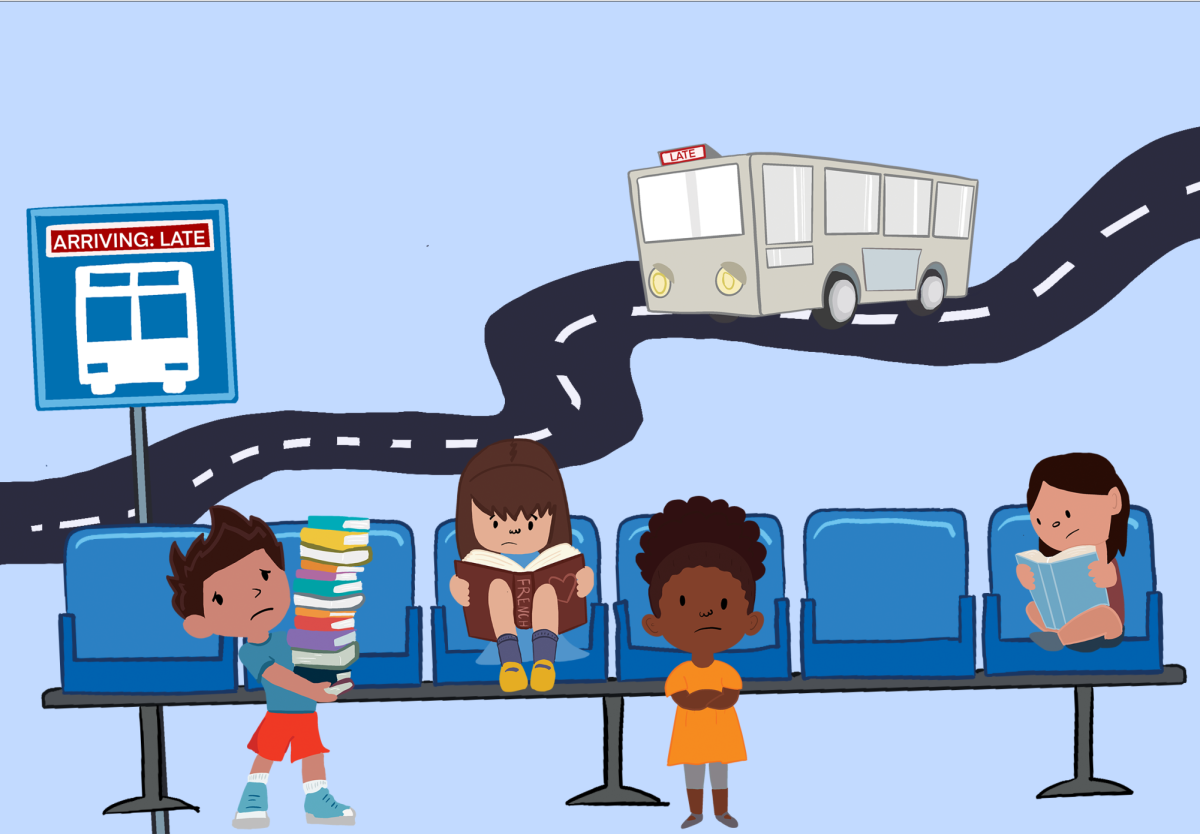At over 2,100 students, FHS has the largest student body of the five high schools in the FUHSD. Additionally, the boundaries of FHS — stretching almost eight miles between the Baylands and mid-Cupertino — are vast, making the other FUHSD schools that serve neighborhood students pale in comparison. Although FHS was initially a neighborhood school, it expanded its boundaries to accommodate more students after the shutdown of Sunnyvale High School in 1981 into its subsequent replacement The King’s Academy, a private Christian middle and high school. As a result, many FHS students who would otherwise attend Sunnyvale High School face transportation challenges due to the sheer distance between school and home.
Although FHS offers free bus passes monthly, the rides are long and are only offered at specific times somehow the day. This creates challenges for students involved in sports or other after-school extracurriculars.
“We currently do have VTA, which is a public bus system, but it doesn’t run late into the night,” FUHSD Student Board Representative Elisa Floyd said. “I present to the Board every three weeks, and this issue has been brought up quite often over the past year. Students don’t have enough options right now.”
For instance, it takes students that live in Lakewood Village one hour and 19 minutes to get home using public transportation after sports practice.
“In the morning, the bus rides are kind of unpredictable,” FHS sophomore Diva Adhikari said. “The timing is really uncomfortable. So I have to plan [time] for homework and after-school activities.”
Although FHS is committed to providing equal opportunities to all students, transportation issues limit the activities students that live further away can participate in. FUHSD is aware of these issues, and within the other schools in the district, action has been taken to address the mobility challenges and inadequate VTA system. Rod Sinks, former Cupertino mayor, discussed the direct approach he took to resolve transportation issues within Cupertino.
“If you’re a student, and you have five classes you’re studying for and you want to participate in extracurriculars, but you don’t have anybody that can necessarily bring you home on a given night, it’s a discouragement,” Sinks said. “[FUHSD] wants a comprehensive high school experience for all of our students.”
Additionally, the VTA itself has been cutting back, posing a challenge to the hundreds of students across the district who rely on the system to move to and from school. In an effort to alleviate this issue, Sinks and the Cupertino City Council reached out to popular rideshare companies such as Uber and Lyft in 2019, and discussed the idea of a subsidized transportation system for students. However, they ultimately decided against the contract due to a lack of wheelchair and bicycle accessibility — the drivers would not be able to accommodate the unique mobility necessities that some students required.
Thus, Cupertino city staff did a professional evaluation of various rideshare companies before eventually reaching out to Via, one of the largest microtransit operators in the U.S., with an international presence in 40 countries. Microtransit is a transportation technology that allows for shared rides through an app. Palo Alto had already been successful using Via, so Cupertino partnered with Via in 2019 to expand its reach. Unfortunately, providing rideshare services for entire cities is expensive. In 2023, Cupertino partnered with Santa Clara to apply for the Transit and Intercity Rail Capital Program grant.
“[TIRCP] is used for innovative transportation models,” Sinks said. “The state has money for programs that reduce CO2 emissions, [and] transportation is responsible for nearly half of our CO2 emissions in the area.”
The rideshare service Via provides, named the Silicon Valley Hopper, switched to electric vehicles that would significantly reduce carbon emissions. The Hopper app is regarded by many users as straightforward, easy to use and visually similar to other rideshare apps. A few months later, Cupertino and Santa Clara were awarded the $8.5 million grant, with the condition that the cities would need to match this amount over the next four years. However, this grant allowed for Cupertino and Santa Clara to substantially subsidize the cost for using the Hopper, cutting costs by close to 50%. Before the grant, it would have cost the city $18 for every ride; after the grant, rides cost a little over $9.
The SV Hopper was implemented to provide accessible transportation options to everyone, and receiving the TIRCP grant significantly aided this endeavor. Fares were reduced to $3.50 for adults and $1.75 for students, seniors and disabled individuals. This is substantially less than other methods of public transit, which explains the success Cupertino and Santa Clara has had with the SV Hopper since its joint implementation on Nov. 20, 2023.
From 2019 to 2023, the SV Hopper had over 2,350 active riders in Cupertino, and gave over 53,000 rides just last year. Data from these years shows that the most popular destinations for the SV Hopper included both Cupertino and Monta Vista High Schools, further indicating that students rely heavily on this service.
In May of 2023, Sinks became a member of the Board of Trustees for FUHSD, and realized that Sunnyvale faces the same mobility challenges Cupertino and Santa Clara did. Sinks pitched the idea of expanding the SV Hopper to Sunnyvale, as the majority of FHS and Homestead High School students reside there, and eventually spoke to Sunnyvale City Council about the possibility later in 2023. However, Sunnyvale decided against adopting Via, citing monetary concerns if Sunnyvale did not receive the TIRCP grant.
“I started with this idea after what I heard at board meetings last year,” Sinks said. “But if I go up to Sunnyvale City Council, which I’ve done twice, it’s not going to be as effective. It’s the advocates in Sunnyvale, lobbying their own city council.”
In this regard, the Sunnyvale Mobility Advocacy group was formed as a branch within FUHSD’s Intra-District Council, consisting of dedicated students aiming to convince the Sunnyvale City Council to expand the SV Hopper to the city.
“[The Sunnyvale Mobility Advocacy group] was created to start exploring transportation inequities in the district,” FHS IDC Representative Batoul Mortada said. “We hope to bring the SV Hopper to Sunnyvale as well, so people who live [far] can [benefit].”
Currently, the Sunnyvale Mobility Advocacy group is interviewing FHS and HHS students to gather data to prove that the SV Hopper is an effective solution to the city’s transportation struggles.
“Currently, we’re putting a report together with all the interviews we do,” Floyd said. “[Then we will] meet with individual city council members, to educate them about it, and bring the student perspectives to them.”
The Sunnyvale Mobility Advocacy group plans to approach the Sunnyvale City Council during a meeting in April, when they will decide next year’s annual budget.
“If the [Sunnyvale City Council] is up for it, we could get the Hopper up and running by August, in time for the school year,” Sinks said.










